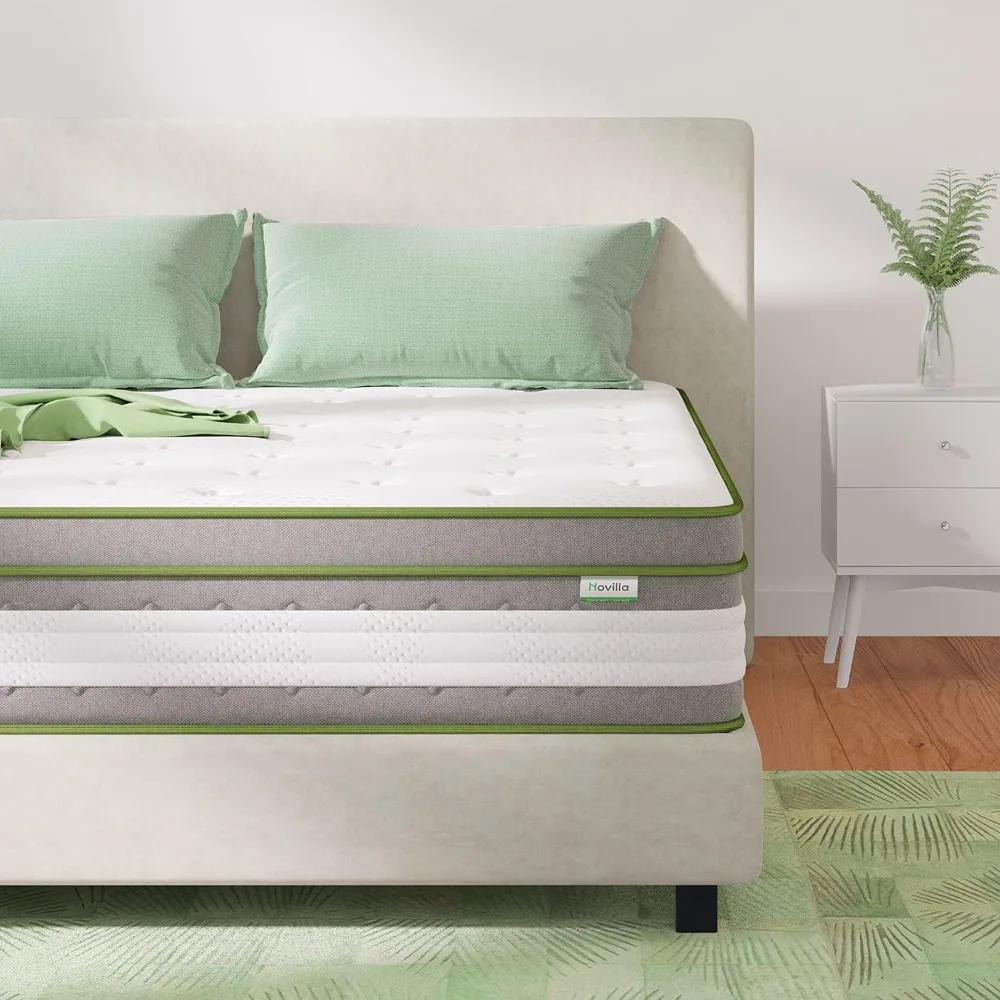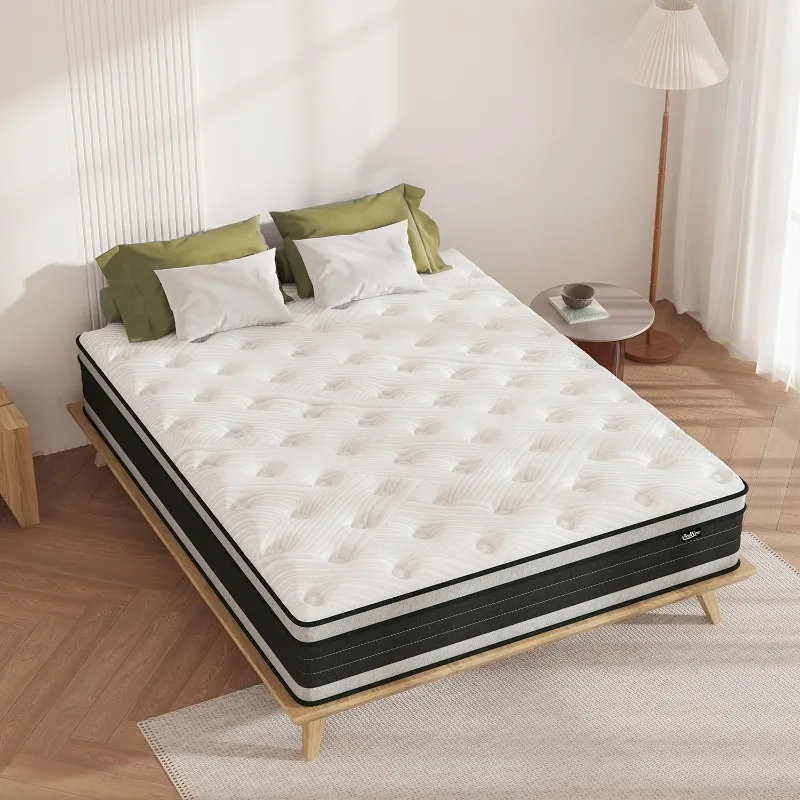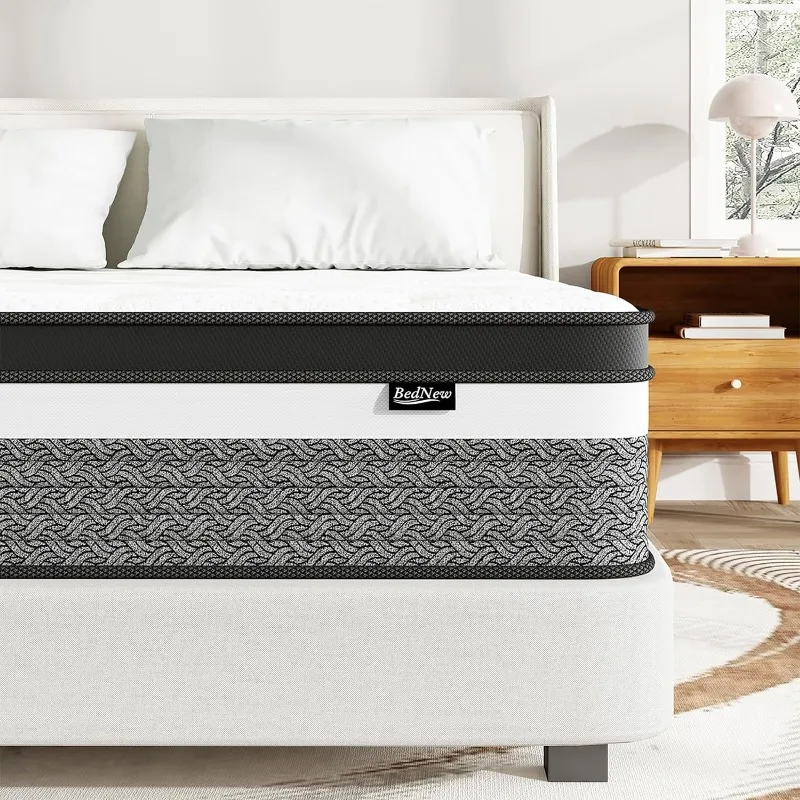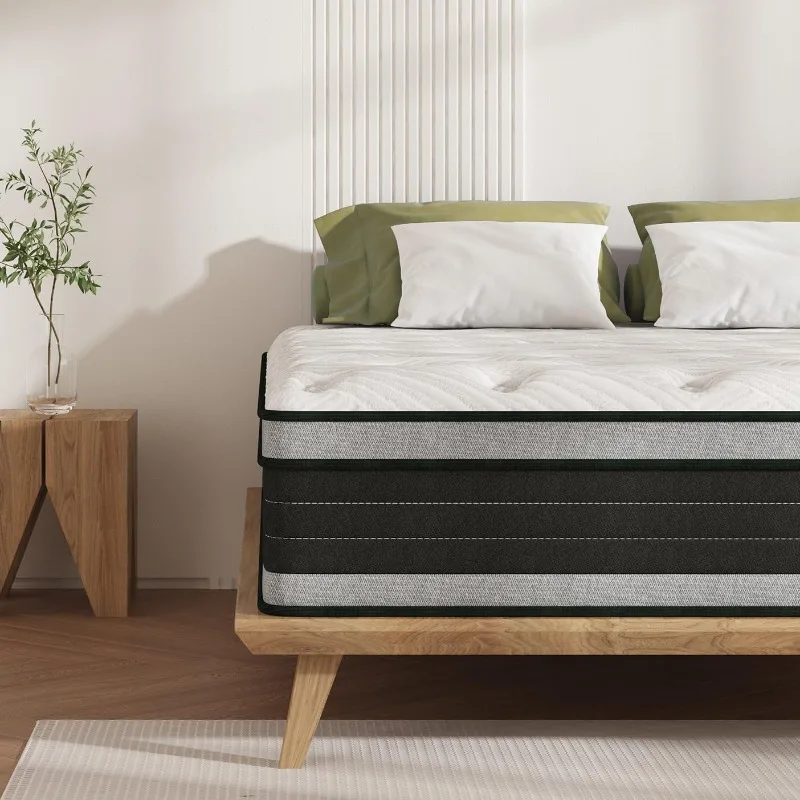In the quest for the perfect night’s sleep, many people turn to pillow top mattresses, attracted by their promise of luxurious comfort and support. But how well do these mattresses live up to their claims?
This article delves into “The Truth About Pillow Top Mattresses: Are They Really Good for You?” by examining their design, benefits, drawbacks, and suitability for different types of sleepers.
Understanding the Design of Pillow Top Mattresses
Pillow top mattresses are characterized by an additional layer of cushioning sewn onto the top of the mattress. This layer, resembling a pillow, is typically made from materials like memory foam, latex, or fiberfill. The design aims to provide extra comfort and a plush sleeping surface. Compared to traditional mattresses, pillow tops offer a softer feel, making them attractive to those who prefer a cloud-like sleeping experience. The additional padding helps to alleviate pressure points, particularly for side sleepers, by conforming to the body’s curves.
Benefits of Pillow Top Mattresses
One of the primary benefits of pillow top mattresses is their superior comfort. The extra layer of padding creates a plush surface that can significantly enhance sleep quality. This makes them particularly appealing for individuals who suffer from chronic pain or conditions such as arthritis, as the cushioning helps to relieve pressure points. Additionally, the design can accommodate various sleeping positions, providing support and comfort for side, back, and stomach sleepers. Many people also appreciate the aesthetic appeal of pillow top mattresses, as they often look more luxurious and inviting than their traditional counterparts.

Proper Support and Spinal Alignment
A well-designed pillow top mattress can provide excellent support and promote proper spinal alignment. The additional cushioning allows the mattress to adjust to your body’s contours, reducing the likelihood of waking up with aches and pains. For side sleepers, this adaptability is crucial, as it helps distribute weight evenly and reduces pressure on the hips and shoulders. For back sleepers, a pillow top can offer lumbar support by filling in the natural curve of the spine. Proper support is essential for maintaining spinal health and preventing long-term discomfort.
Durability and Longevity
Pillow top mattresses tend to have a shorter lifespan compared to other mattress types. The additional padding, while comfortable, can compress over time, leading to indentations and a loss of support. This is particularly true for lower-quality pillow top mattresses, where the materials may not be as resilient. Factors such as body weight and sleep habits can also influence the mattress’s durability. Heavier individuals or couples may experience quicker wear and tear. To extend the longevity of a pillow top mattress, regular rotation and using a mattress protector can be beneficial.
Maintenance and Care
Taking proper care of a pillow top mattress can help preserve its comfort and prolong its lifespan. Regularly rotating the mattress—every three to six months—can prevent uneven wear and minimize the formation of indentations. Using a high-quality mattress protector can safeguard the pillow top from spills, stains, and dust mites, further enhancing its longevity. Occasional vacuuming can also help remove dust and allergens. Following the manufacturer’s care instructions and avoiding excessive weight or pressure on the mattress will contribute to its durability and sustained comfort.
Potential Drawbacks
Despite their many benefits, pillow top mattresses are not without their drawbacks. One of the main concerns is the potential for sagging, particularly in lower-quality models. The additional padding can compress over time, leading to uneven surfaces and reduced support. This can result in discomfort and disrupted sleep. Another drawback is that pillow top mattresses can retain heat, making them less suitable for individuals who tend to sleep hot. The plush surface may impede airflow, causing the bed to feel warmer than desired. Additionally, the extra height of pillow top mattresses can make it challenging to find fitted sheets that fit properly.
Suitability for Different Sleepers
The effectiveness of a pillow top mattress can vary depending on individual preferences and sleep habits. Side sleepers often find pillow tops particularly beneficial, as the additional cushioning can relieve pressure on the hips and shoulders. Back sleepers may also appreciate the contouring support that helps maintain spinal alignment. However, stomach sleepers might find pillow tops too soft, potentially causing the lower back to arch and leading to discomfort. Heavier individuals may experience quicker wear and reduced durability, while lighter individuals might not fully benefit from the added cushioning. It’s important to consider your specific sleep needs and habits when deciding if a pillow top mattress is right for you.
Comparing Pillow Top Mattresses to Other Types
When deciding whether a pillow top mattress is suitable for you, it’s helpful to compare it to other types of mattresses. Memory foam mattresses, for instance, offer excellent contouring and pressure relief but can also retain heat. Latex mattresses are known for their durability and responsiveness, providing a bouncier feel. Hybrid mattresses combine the benefits of innerspring and foam or latex layers, offering a balance of support and comfort. Each type has its own advantages and drawbacks, and understanding these differences can help you make an informed choice based on your preferences and sleep needs.

Cost Considerations
Pillow top mattresses often come at a higher price point compared to traditional innerspring or foam mattresses. The cost is influenced by factors such as the quality of materials, brand reputation, and additional features. While the initial investment may be higher, the enhanced comfort and potential for improved sleep quality can make it a worthwhile expense. However, it’s essential to evaluate the mattress’s durability and long-term value, as lower-quality pillow tops may require more frequent replacement. Balancing cost with the expected lifespan and benefits will help you determine if a pillow top mattress is a practical investment for your sleep needs.
Reading Customer Reviews and Ratings
When considering a pillow top mattress, reading customer reviews and ratings can provide valuable insights into its performance and durability. Real-world experiences from other users can highlight potential issues or benefits that may not be apparent from product descriptions alone. Look for reviews that mention factors such as comfort, support, durability, and heat retention. Pay attention to both positive and negative feedback to get a comprehensive understanding of the mattress’s performance. This research can help you make an informed decision and choose a pillow top mattress that aligns with your preferences and expectations.
Mattress Trial Periods and Warranties
Many mattress manufacturers offer trial periods and warranties, providing an added layer of assurance when purchasing a pillow top mattress. Trial periods allow you to test the mattress in your home for a certain duration, typically ranging from 90 to 120 days, to determine if it meets your comfort and support needs. If the mattress doesn’t meet your expectations, you can often return it for a refund or exchange. Warranties, on the other hand, cover manufacturing defects and premature wear, offering peace of mind and protection for your investment. Be sure to read the terms and conditions of trial periods and warranties to understand what is covered and how to make the most of these benefits.
Expert Opinions and Recommendations
Seeking expert opinions and recommendations can provide valuable guidance when choosing a pillow top mattress. Sleep professionals, chiropractors, and mattress experts can offer insights into the benefits and drawbacks of different mattress types based on your unique needs. They can help you navigate the vast array of options and identify the features that align with your sleep preferences and health considerations. Expert advice can also clarify any misconceptions and ensure that you’re making an informed decision that supports your overall well-being.
Balancing Comfort and Support
One of the key considerations when choosing a pillow top mattress is finding the right balance between comfort and support. While the plush surface provides cushioning, it’s essential that the underlying support system maintains proper spinal alignment. Too much softness can lead to improper posture and discomfort, while too much firmness can create pressure points. Look for pillow top mattresses that offer a combination of plush cushioning and supportive cores, such as innerspring or high-density foam, to achieve the ideal balance that promotes restful sleep.

Conclusion
“The Truth About Pillow Top Mattresses: Are They Really Good for You?” is not a one-size-fits-all answer. Pillow top mattresses offer numerous benefits in terms of comfort and support, making them an appealing choice for many sleepers. However, they also come with potential drawbacks such as reduced durability, heat retention, and higher costs. Evaluating your specific sleep needs, preferences, and budget is essential when deciding if a pillow top mattress is the right choice for you. By considering factors such as support, durability, maintenance, and expert recommendations, you can make an informed decision that enhances your sleep quality and overall well-being. Ultimately, a high-quality pillow top mattress can be a valuable investment in achieving restful and rejuvenating sleep.










